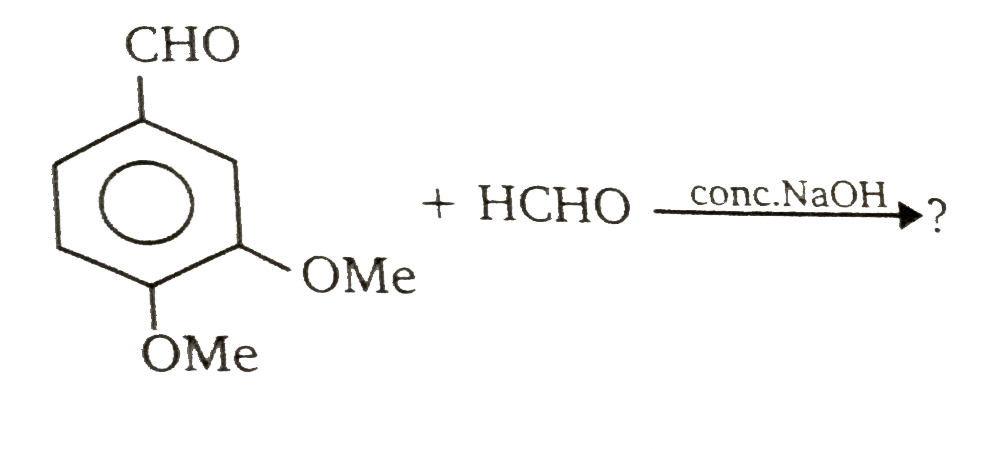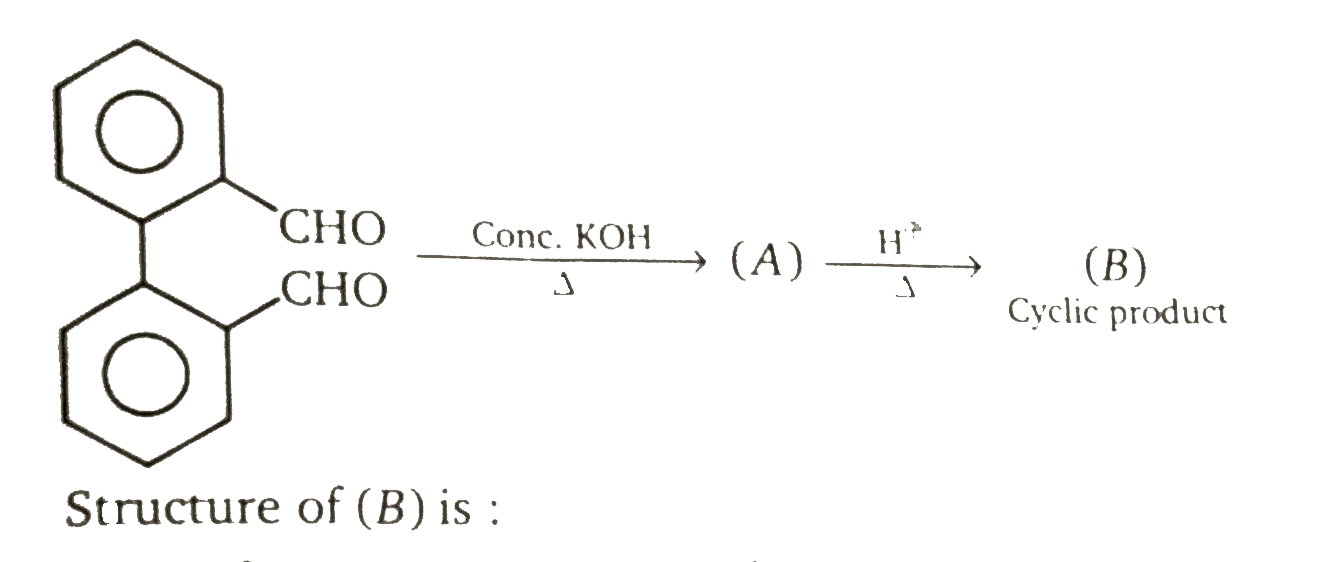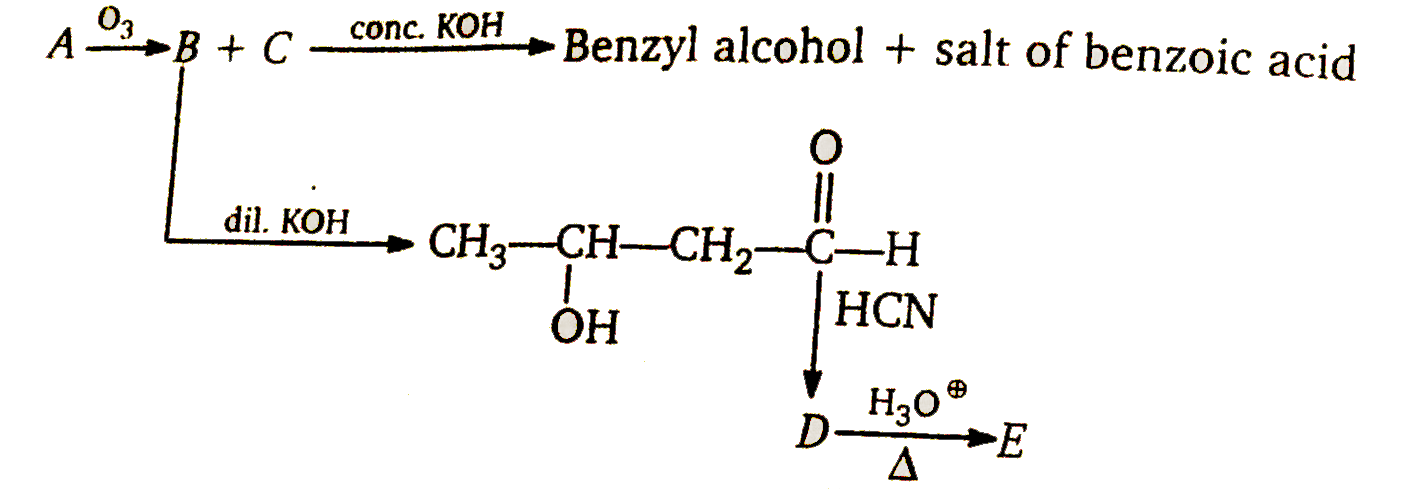Level-2 from MS CHOUHAN CHEMISTRY (HINGLISH) ALDOL AND CANNIZARO REACTION for Class 12
| Class 12 | CHEMISTRY |
| Chapter | ALDOL AND CANNIZARO REACTION |
| MS CHOUHAN CHEMISTRY (HINGLISH) | Level-2 |
| Medium | English |
| Academic Year | 2023-2024 |
Question 54
Aldol condensation proceeds by carbon-carbon bond formation between an enolate donor and a carbonyl acceptor. For each of the following aldol products (a thorugh e) select a donor and an acceptor compound from the list at the bottom of the page (compounds A through H). write the letter corresponding to your selection in the appropriate answer box.
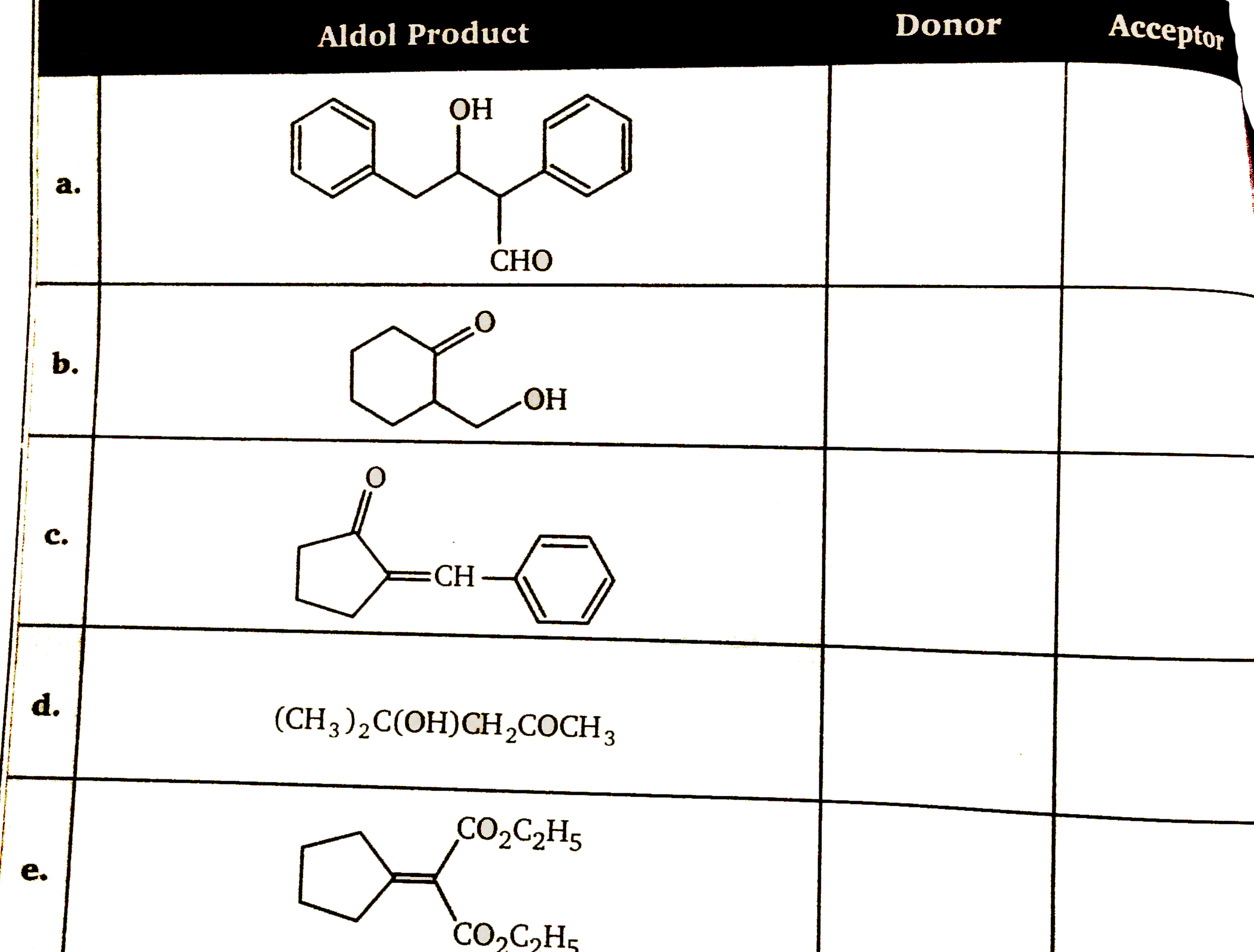 .
.
Q. View Solution
View SolutionQuestion 55
Aldol condensation proceeds by carbon-carbon bond formation between an enolate donor and a carbonyl acceptor. For each of the following aldol products (a thorugh e) select a donor and an acceptor compound from the list at the bottom of the page (compounds A through H). write the letter corresponding to your selection in the appropriate answer box.
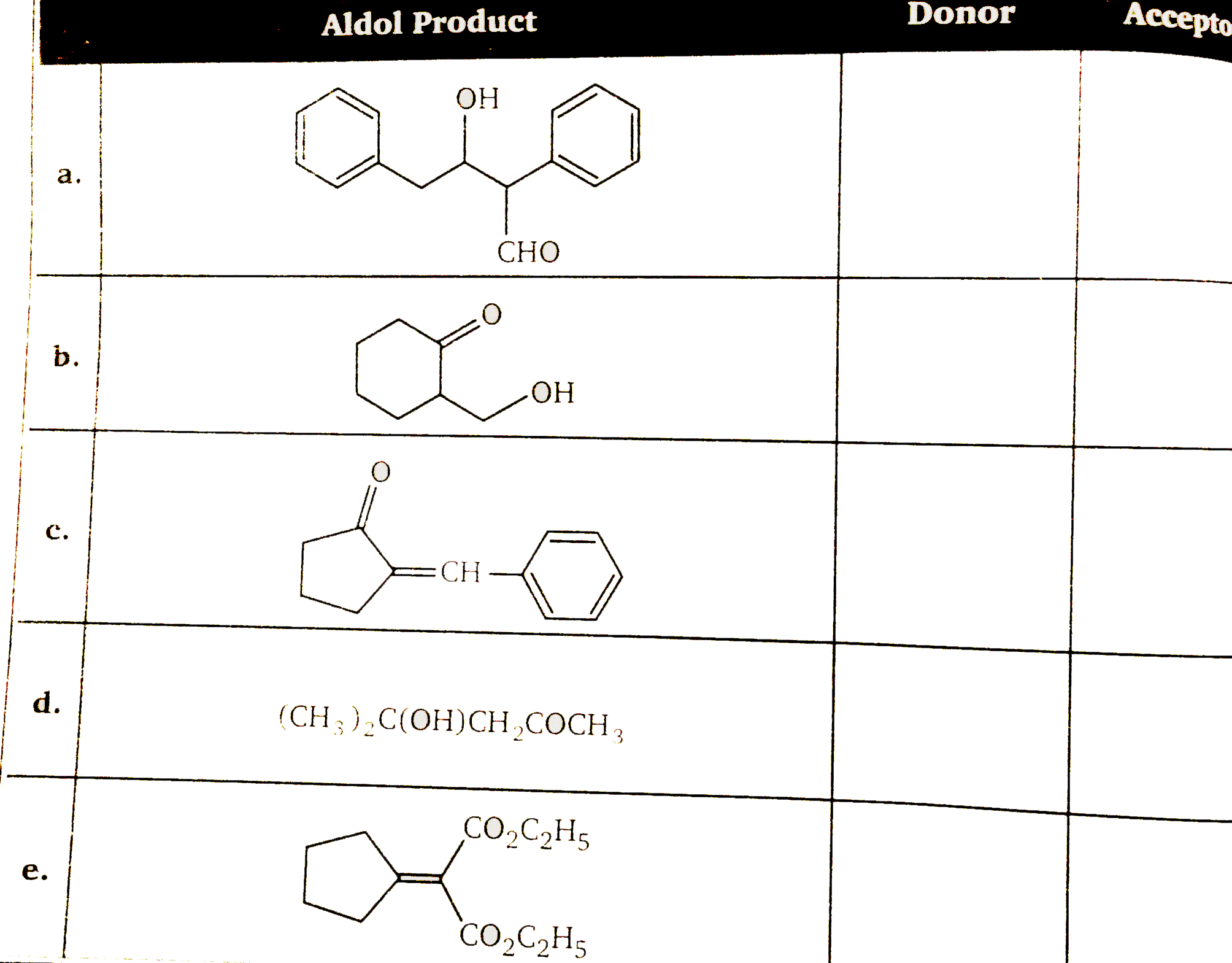 .
.
Q. View Solution
View SolutionQuestion 56
Aldol condensation proceeds by carbon-carbon bond formation between an enolate donor and a carbonyl acceptor. For each of the following aldol products (a thorugh e) select a donor and an acceptor compound from the list at the bottom of the page (compounds A through H). write the letter corresponding to your selection in the appropriate answer box.
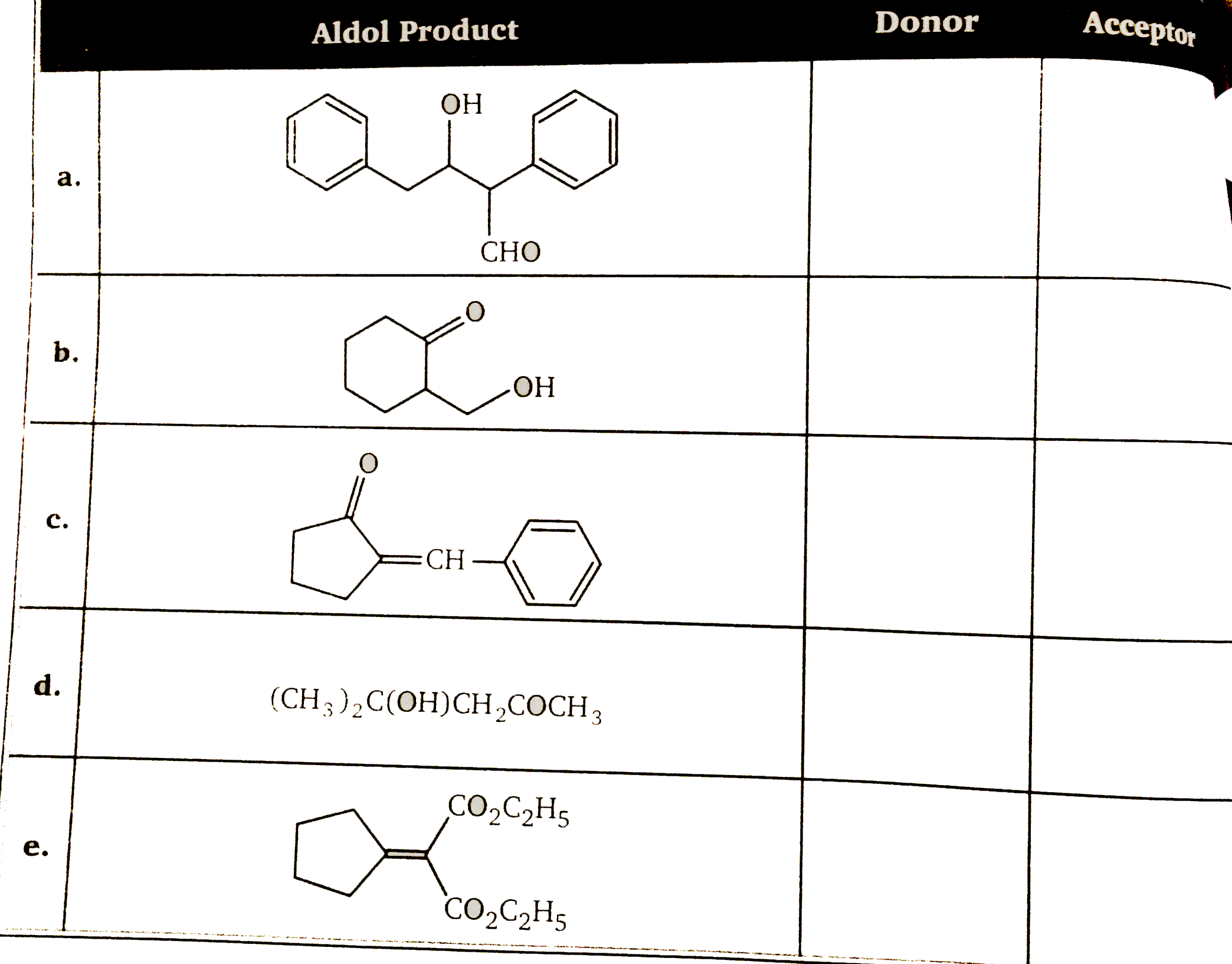 .
.
 View Solution
View SolutionQuestion 57
Aldol condensation proceeds by carbon-carbon bond formation between an enolate donor and a carbonyl acceptor. For each of the following aldol products (a thorugh e) select a donor and an acceptor compound from the list at the bottom of the page (compounds A through H). write the letter corresponding to your selection in the appropriate answer box.
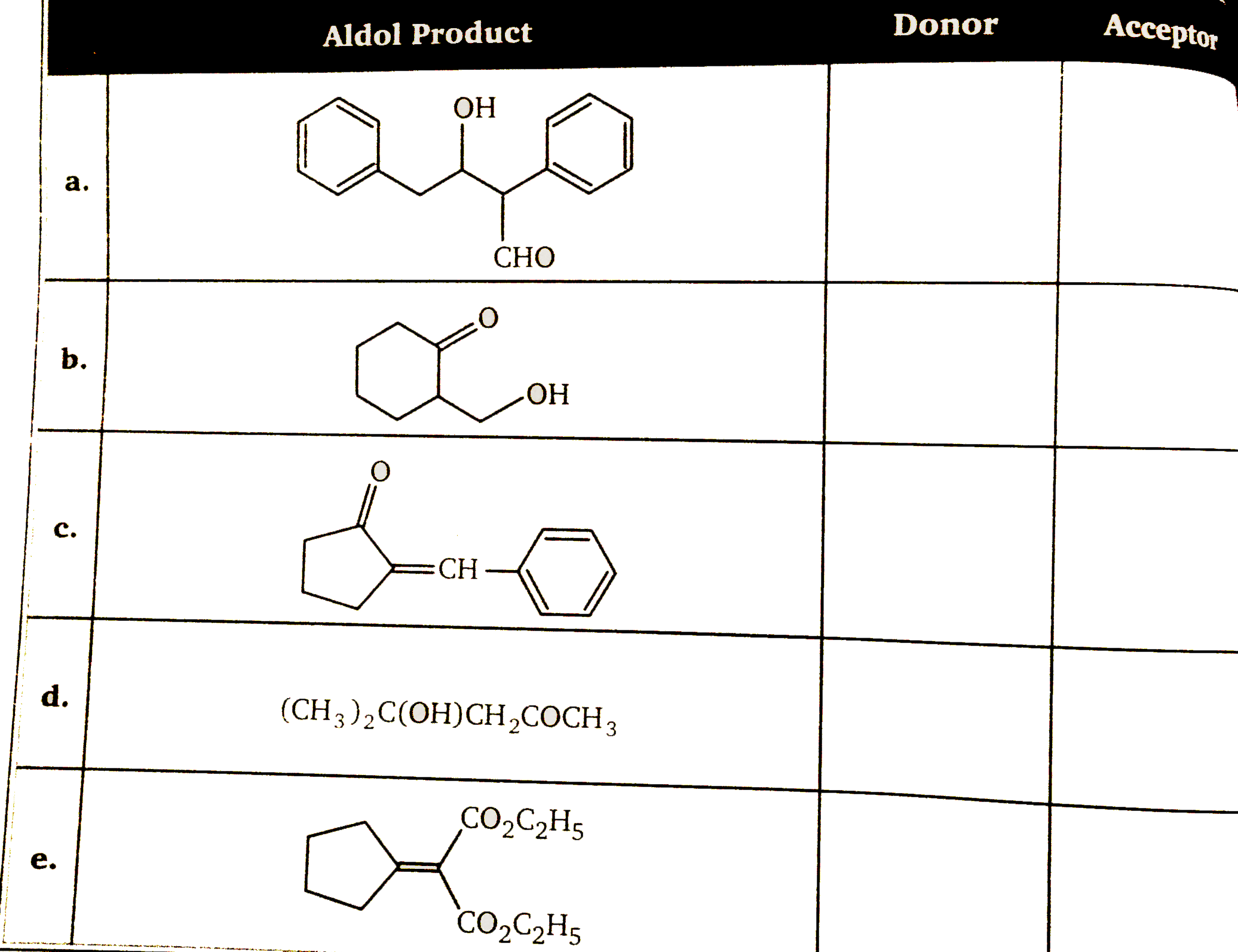 .
.
Q. View Solution
View SolutionQuestion 58
Aldol condensation proceeds by carbon-carbon bond formation between an enolate donor and a carbonyl acceptor. For each of the following aldol products (a thorugh e) select a donor and an acceptor compound from the list at the bottom of the page (compounds A through H). write the letter corresponding to your selection in the appropriate answer box.
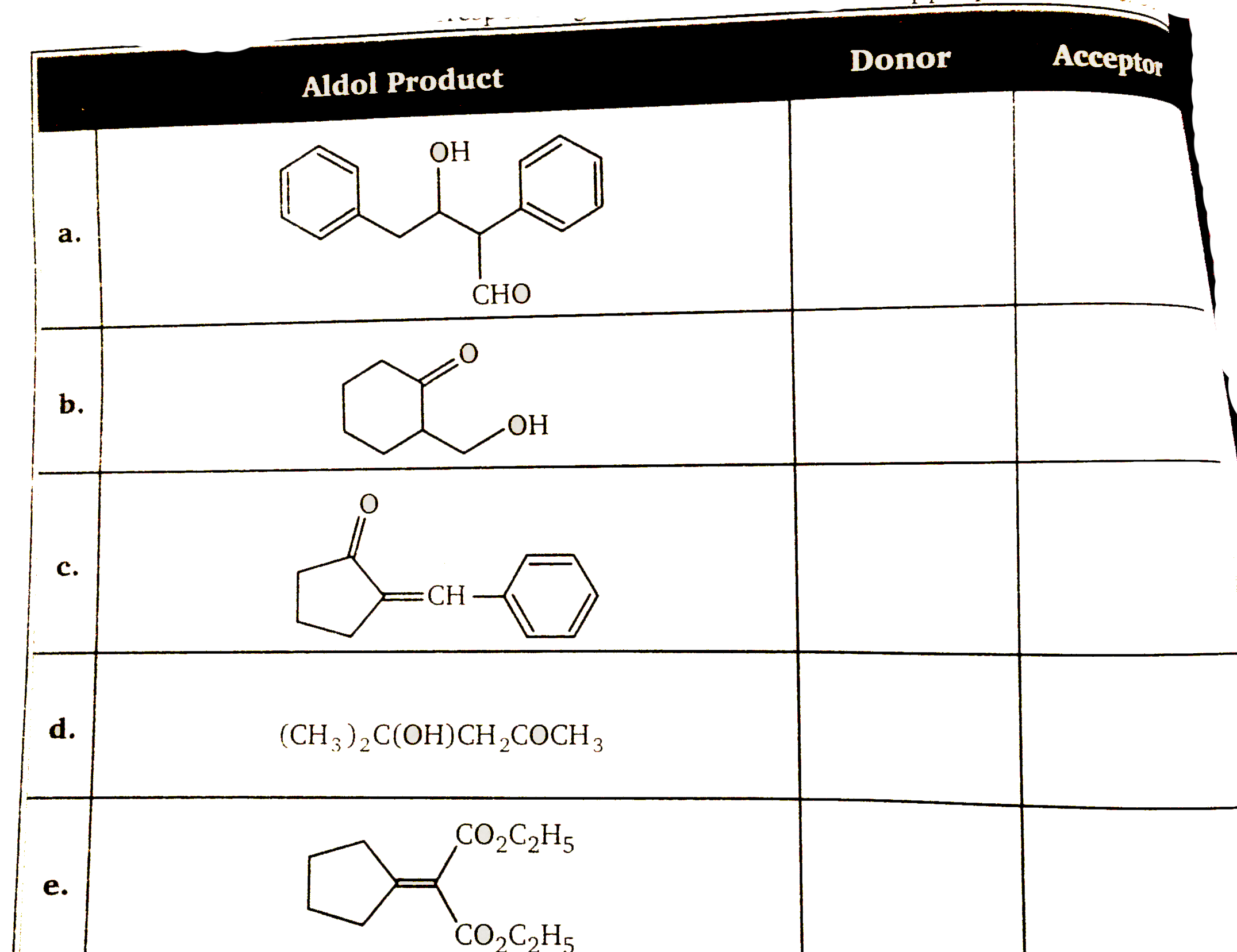 .
.
Q. View Solution
View SolutionQuestion 59
Aldol condensation proceeds by carbon-carbon bond formation between an enolate donor and a carbonyl acceptor. For each of the following aldol products (a thorugh e) select a donor and an acceptor compound from the list at the bottom of the page (compounds A through H). write the letter corresponding to your selection in the appropriate answer box.
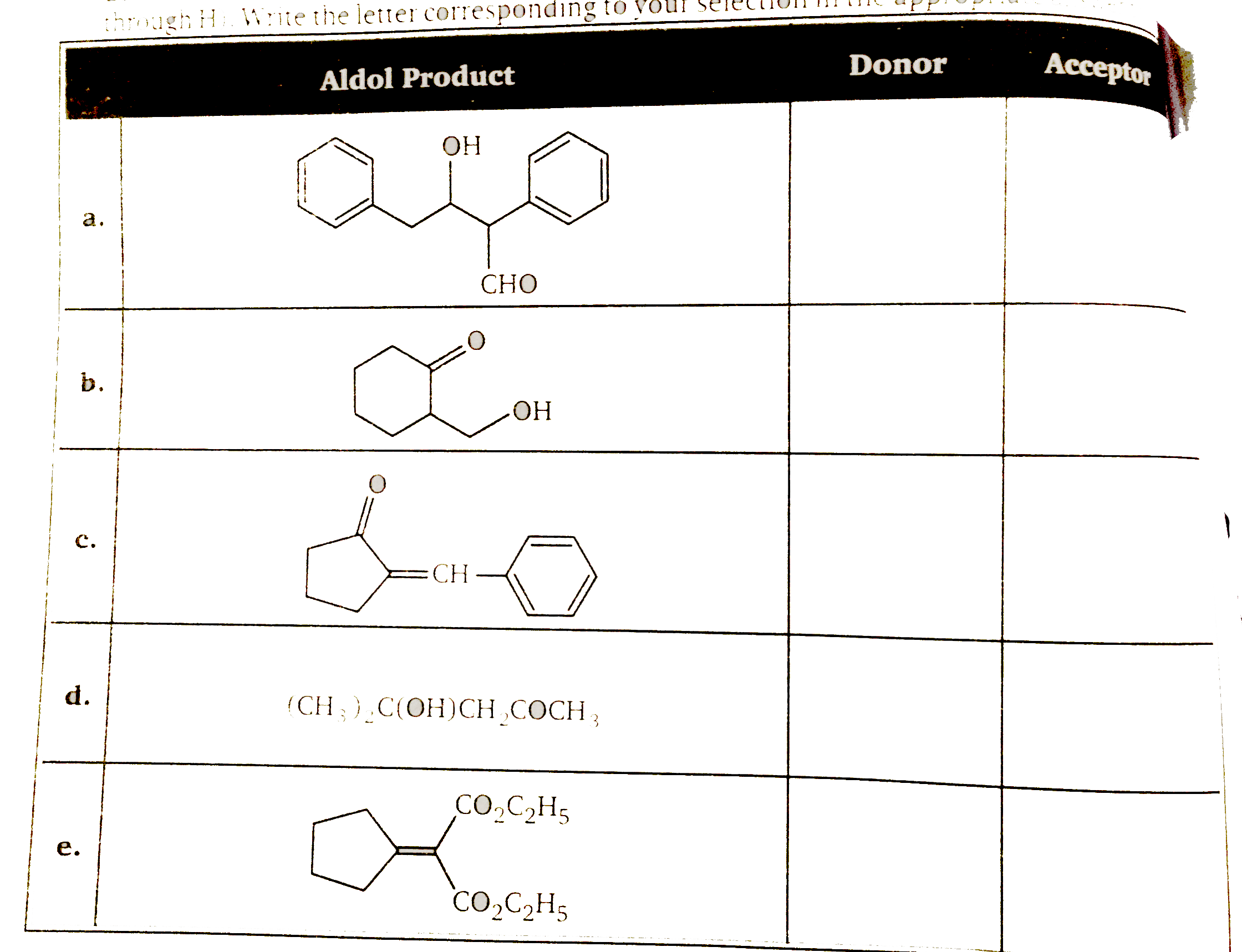 .
.
Q. .View Solution
.View SolutionQuestion 60
Aldol condensation proceeds by carbon-carbon bond formation between an enolate donor and a carbonyl acceptor. For each of the following aldol products (a thorugh e) select a donor and an acceptor compound from the list at the bottom of the page (compounds A through H). write the letter corresponding to your selection in the appropriate answer box.
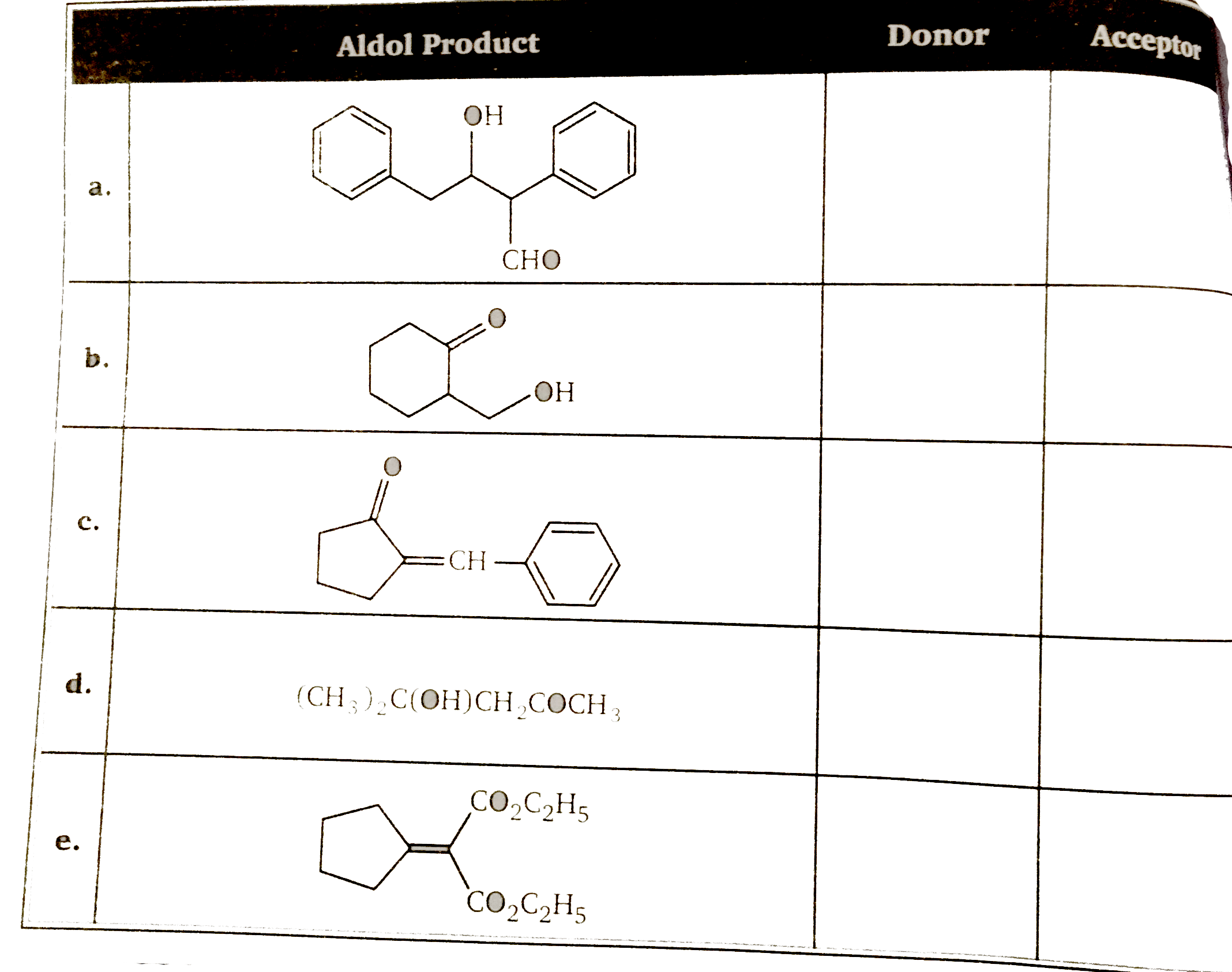 .
.
Q. View Solution
View SolutionQuestion 61
Aldol condensation proceeds by carbon-carbon bond formation between an enolate donor and a carbonyl acceptor. For each of the following aldol products (a thorugh e) select a donor and an acceptor compound from the list at the bottom of the page (compounds A through H). write the letter corresponding to your selection in the appropriate answer box.
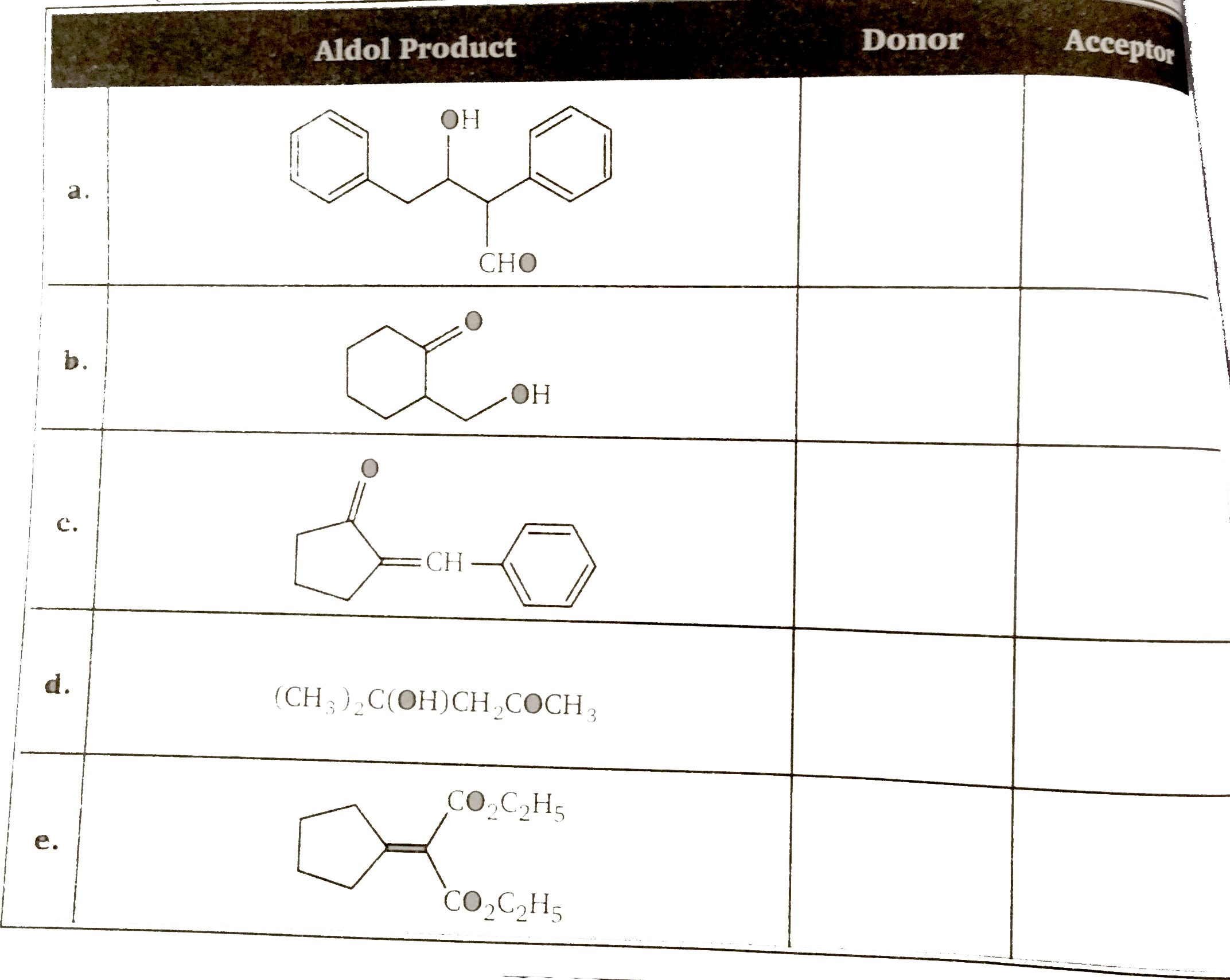 .
.
Q. View Solution
View SolutionQuestion 62
During an experimental workup procedure, a chemist treated a starting material with NaoH in the solvent acetone [(CH3)2C=O], however, the starting material was recovered unreacted. Instead, the chemist isolated a small amount of product A (shown below).
Product A
1. Elemental analysis of product A indicated that it consisted only of carbon, hydrogen, and oxygen.
2. Product A had a molecular weight of 116 g/mol.
3. Product A was a methyl ketone because it gave a positive iodoform test.
4. When product A was treated with Br2 in CCl4, the red bromine colour persisted, because no carbon-carbon double bonds were present to react with the bromine.
The structure of product A was further confirmed when treatment with hot sulfuric acid resulted in the corresponding dehydration product, product (B)gt
Q. What is the molecular weight of a compound that undergoes an aldol self-condensation reaction to result in a β-hydroxy ketone with a molecular weight of 144?View SolutionQuestion 63
During an experimental workup procedure, a chemist treated a starting material with NaoH in the solvent acetone [(CH3)2C=O], however, the starting material was recovered unreacted. Instead, the chemist isolated a small amount of product A (shown below).
Product A
1. Elemental analysis of product A indicated that it consisted only of carbon, hydrogen, and oxygen.
2. Product A had a molecular weight of 116 g/mol.
3. Product A was a methyl ketone because it gave a positive iodoform test.
4. When product A was treated with Br2 in CCl4, the red bromine colour persisted, because no carbon-carbon double bonds were present to react with the bromine.
The structure of product A was further confirmed when treatment with hot sulfuric acid resulted in the corresponding dehydration product, product (B)gt
Q. The aldol self-condensation of acetone is an equilibrium that favours acetone over its condensation product. which of the following experimental modifications is most likely to shift the position of equilibrium towards product A?View SolutionQuestion 64
During an experimental workup procedure, a chemist treated a starting material with NaoH in the solvent acetone [(CH3)2C=O], however, the starting material was recovered unreacted. Instead, the chemist isolated a small amount of product A (shown below).
Product A
1. Elemental analysis of product A indicated that it consisted only of carbon, hydrogen, and oxygen.
2. Product A had a molecular weight of 116 g/mol.
3. Product A was a methyl ketone because it gave a positive iodoform test.
4. When product A was treated with Br2 in CCl4, the red bromine colour persisted, because no carbon-carbon double bonds were present to react with the bromine.
The structure of product A was further confirmed when treatment with hot sulfuric acid resulted in the corresponding dehydration product, product (B)gt
Q. Based only on observation 1 and 2, which of the following compounds could have been product A?View SolutionQuestion 65
During an experimental workup procedure, a chemist treated a starting material with NaoH in the solvent acetone [(CH3)2C=O], however, the starting material was recovered unreacted. Instead, the chemist isolated a small amount of product A (shown below).
Product A
1. Elemental analysis of product A indicated that it consisted only of carbon, hydrogen, and oxygen.
2. Product A had a molecular weight of 116 g/mol.
3. Product A was a methyl ketone because it gave a positive iodoform test.
4. When product A was treated with Br2 in CCl4, the red bromine colour persisted, because no carbon-carbon double bonds were present to react with the bromine.
The structure of product A was further confirmed when treatment with hot sulfuric acid resulted in the corresponding dehydration product, product (B).
Q. When a drop of Br2 in CCl4 is added to product B, the resulting solution will ewView SolutionQuestion 66
During an experimental workup procedure, a chemist treated a starting material with NaoH in the solvent acetone [(CH3)2C=O], however, the starting material was recovered unreacted. Instead, the chemist isolated a small amount of product A (shown below).
Product A
1. Elemental analysis of product A indicated that it consisted only of carbon, hydrogen, and oxygen.
2. Product A had a molecular weight of 116 g/mol.
3. Product A was a methyl ketone because it gave a positive iodoform test.
4. When product A was treated with Br2 in CCl4, the red bromine colour persisted, because no carbon-carbon double bonds were present to react with the bromine.
The structure of product A was further confirmed when treatment with hot sulfuric acid resulted in the corresponding dehydration product, product (B)gt
Q. Wihch of the following compounds from the passage will give a positive iodoform test.?View SolutionQuestion 73
An organic compound 'P' with jmolecular formula C8H8O forms an organic red ppt with 2,4−DNP gives yellow ppt. on heating with I2 in presence of NaOH. It neither reduces tollen's or fehling reagent nor does it decolourise Br2 water or baeyer's reagent. On drastic oxidation with chromic acid (H2CrO4) it gives an acid (Q) having molecular formula C7H6O2.
Q. Identify compound P:View SolutionQuestion 74
An organic compound 'P' with jmolecular formula C8H8O forms an organic red ppt with 2,4−DNP gives yellow ppt. on heating with I2 in presence of NaOH. It neither reduces tollen's or fehling reagent nor does it decolourise Br2 water or baeyer's reagent. On drastic oxidation with chromic acid (H2CrO4) it gives an acid (Q) having molecular formula C7H6O2.
Q. QNaOH/CaO/Δ−−−−−−−−−−→R (Major product).
R will be,View SolutionQuestion 75
An organic compound 'P' with jmolecular formula C8H8O forms an organic red ppt with 2,4−DNP gives yellow ppt. on heating with I2 in presence of NaOH. It neither reduces tollen's or fehling reagent nor does it decolourise Br2 water or baeyer's reagent. On drastic oxidation with chromic acid (H2CrO4) it gives an acid (Q) having molecular formula C7H6O2.
Q. Pdil.өOH−−−→ΔSCH3MgBr(1 mole)−−−−−−−−−−−−→H3O⊕
No. of stereoisomer in the final product T:View Solution

 Compound C is:
Compound C is:
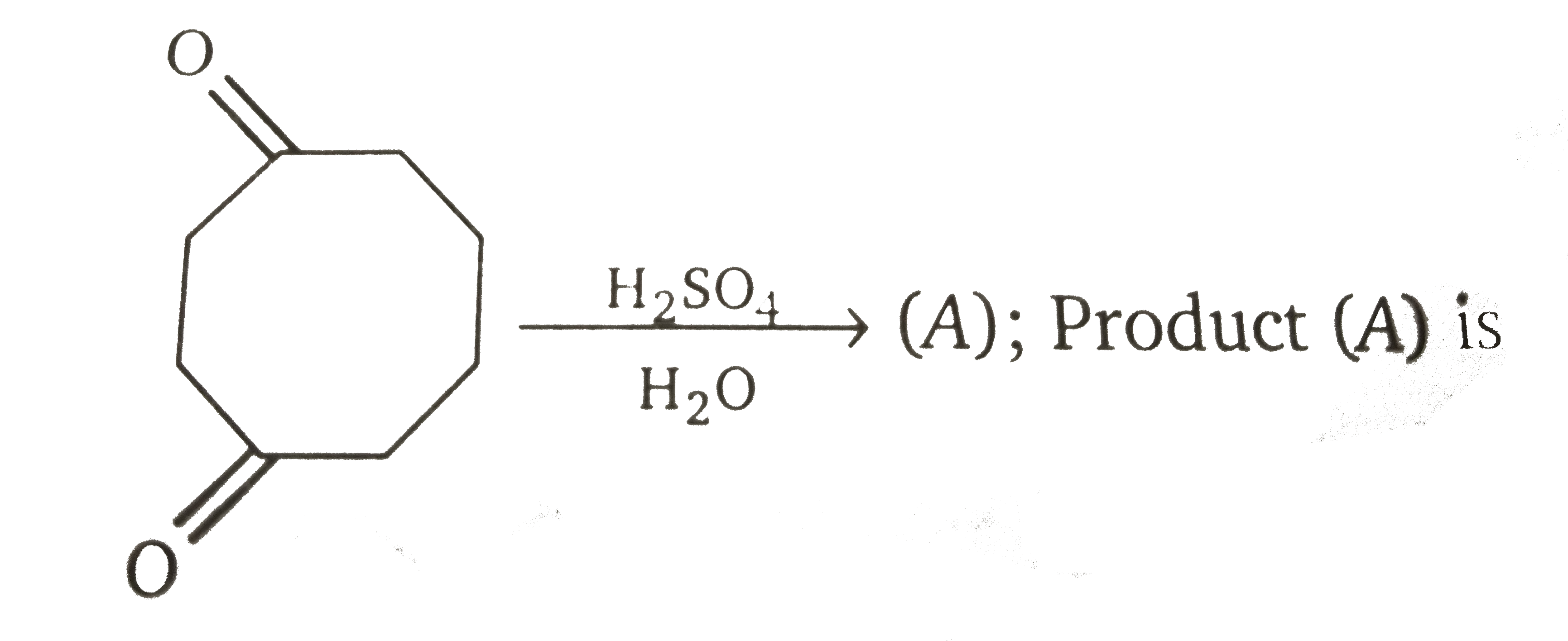
 Reactant (A) is,
Reactant (A) is, product (A) is
product (A) is 
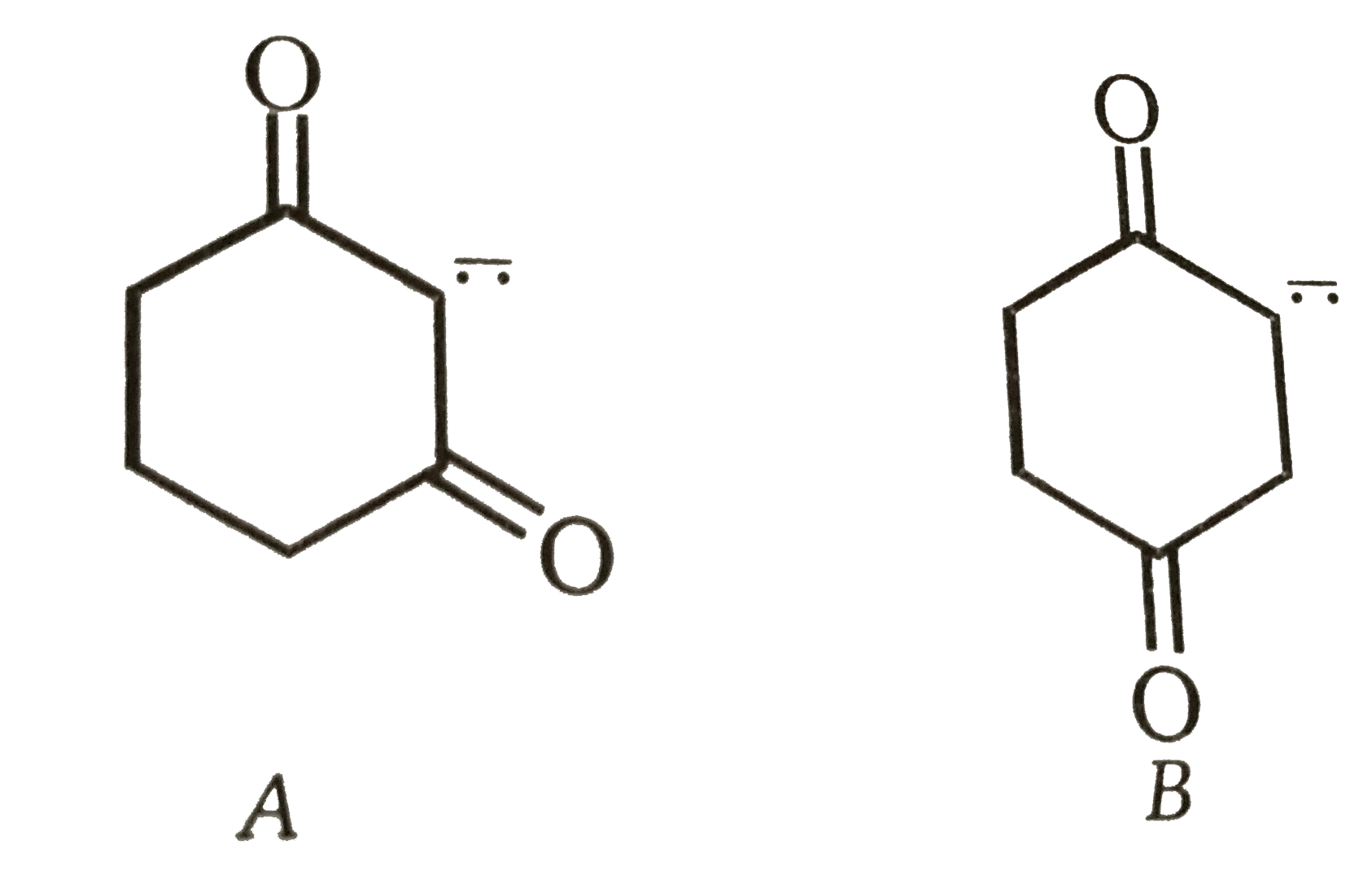


 the reactant (A) will be
the reactant (A) will be 




 product (A) is,
product (A) is,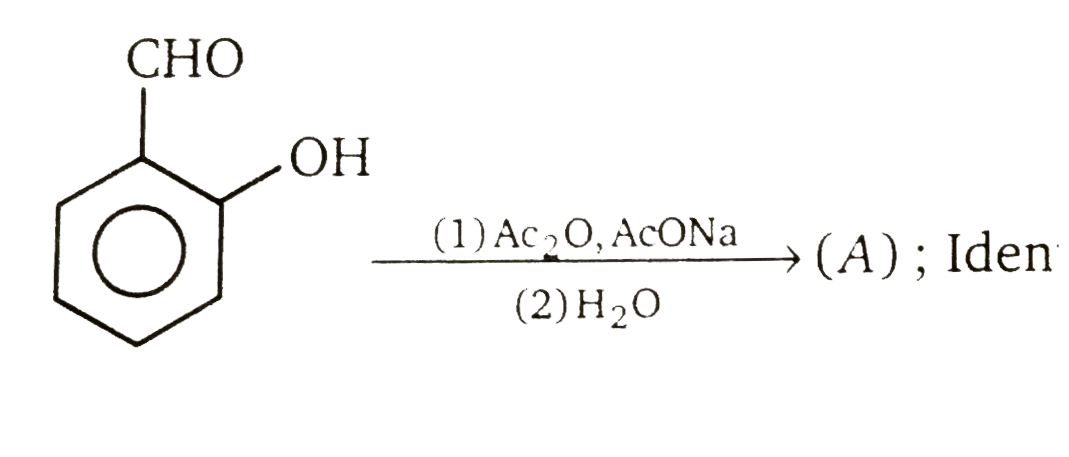 Identify product and name of reaction.
Identify product and name of reaction.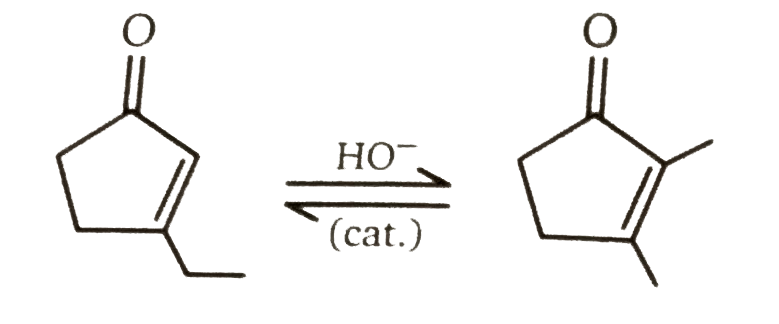
 (A) and (B) are isomer Identify (B).
(A) and (B) are isomer Identify (B). product (C) is:
product (C) is:
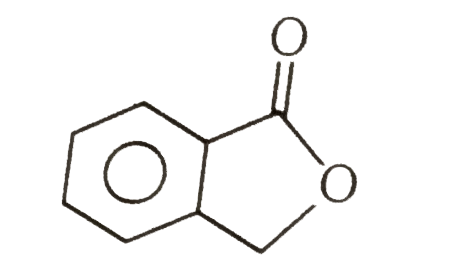
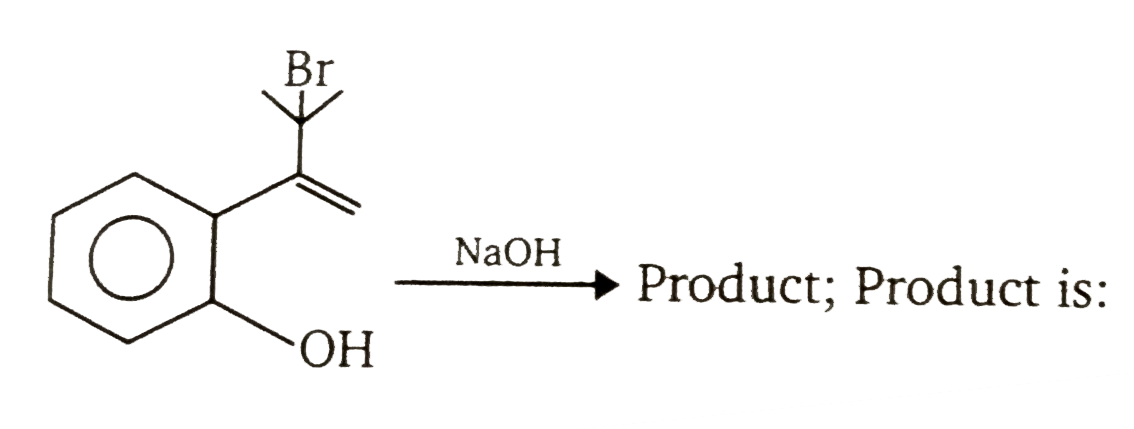 Product is:
Product is:
